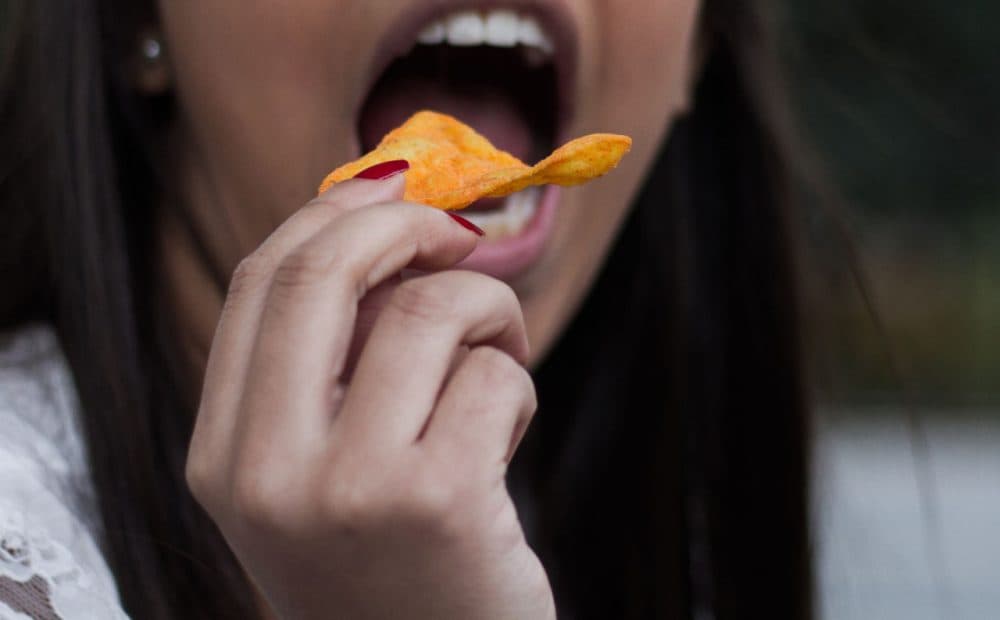Advertisement
How The Food Industry Engineers The Need To Eat
Resume
It is no secret that the rise in obesity in America has something to do with food. But how much? And what role does the food industry as a whole play?
As part of Here & Now's series this week on obesity, America On The Scale, host Jeremy Hobson speaks with investigative reporter Michael Moss.
For Moss's book, "Salt Sugar Fat," he went inside the industry and spoke with food inventors and CEOs about how the industry has shaped what people eat and capitalized on how American eating habits have changed - for the worse and, maybe now, for the better.
Interview Highlights
Is it possible to prove the level of responsibility that the food industry holds?
“I was really struck by how many people inside the industry itself hold their industry totally accountable, totally culpable for this surge in obesity that we’ve had for the last 30 years now. Clearly there are other contributing factors. Clearly there are things like exercise and personal responsibility. But they being insiders came to believe that all of the effort they put into making their product so irresistible, so tasty, so perfectly engineered to get us to not just like them but to want more and more of them, laid that responsibility directly at their feet.”
What does perfectly engineered mean?
“They would hire people like Howard Moskowitz, trained in high math at Queens College and experimental psychology at Harvard. Howard was one of the people responsible for some of the biggest icons in the grocery store. For example, he walked me through his recent creation of a new soda flavor for Dr. Pepper in which he started with no less than 59 variations of sweetness, each one slightly different than the next, subjected those to 3,000 taste tests around the country, did his high math regression analysis thing, put the data in the computer, and out comes this bell shaped curve where the perfect amount of sweetness, not too little, not too much, is at the very top of the curve. And it’s Howard who coined the expression ‘bliss point’ to capture that perfect amount of sweetness that would send us over the moon, their products flying off the shelf. But it’s not that they engineer bliss points for sweetness in things like soda, ice cream, cookies - things we know and expect to be sweet. The food companies have marched around the grocery store, adding sweetness, engineering bliss points to products that didn’t used to be sweet. So now bread has added sugar and a bliss point for sweetness, yogurt can be as sweet as ice cream for some brands, and pasta sauce, my gosh there are some brands with the equivalent of sugar from a couple of Oreo cookies in one half cup serving. And what this does, nutritionists say, is create this expectation in us that everything should be sweet and this is especially difficult for kids who are hard-wired to the sweet taste. So when you drag their little butts over to the produce aisle and try to get them to eat some of that stuff we all should be eating more of, brussel sprouts and broccoli, which have some of the other basic tastes like sour and bitter, you get a rebellion on your hands.”
Is there any movement to stop this?
“Well one of the fascinating things I came across in my research is that it was none other than Philip Morris, for years and years was the largest food manufacturer in North America through its acquisition of General Foods and then Kraft, it was none other than the tobacco managers at Philip Morris who turned to their food managers, this is 1999 and warned them that they were going to face as much trouble over salt, sugar, fat, obesity as they were then over tobacco smoking and health problems. Now we’re starting to see that come home for the food companies. Earlier this year almost all of them stood before investors, reported dismal earnings and the most forthright among the heads of the food companies attributed that decline to consumers caring more and more about what they put in their bodies, wanting to eat healthier, and acting on those decisions by changing their purchasing habits, which is really hitting the food giants hard.”
How has advertising shaped this?
“There are experts who say there was a day in the 1980s where suddenly it became socially acceptable to eat anything anywhere anytime. That’s when you saw parents stop telling their kids not to snack between meals, snacking became the fourth American meal. That played right in the hands of the food companies. So on one hand you can look at them as driving our culture of eating now that’s dominated by excessive empty bad for you calories. On the other hand though they have been in part responding to and capitalizing on changes that have been happening in society, including those that have caused us to no longer avoid snacking.”
Guest
- Michael Moss, Pulitzer Prize-winning investigative reporter and author of the book, "Salt Sugar Fat." He tweets @MichaelMossC.
This segment aired on December 10, 2015.